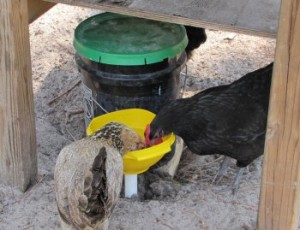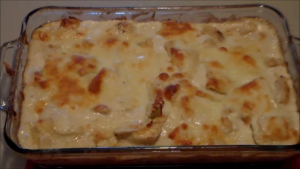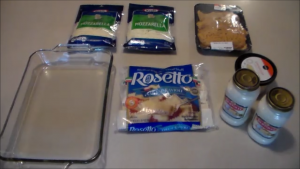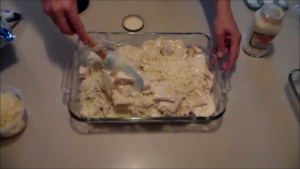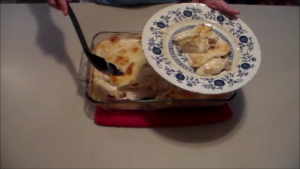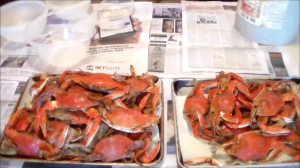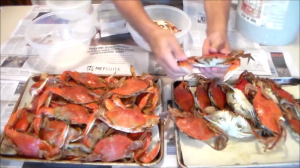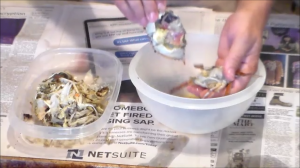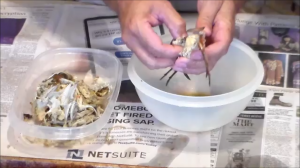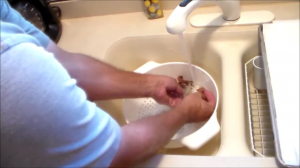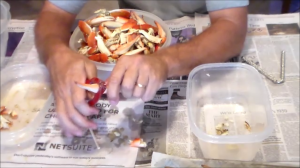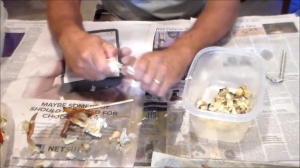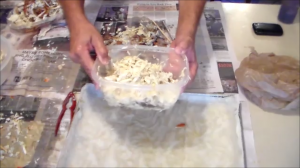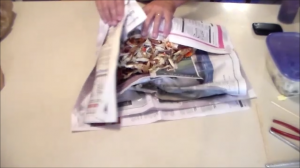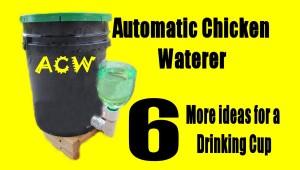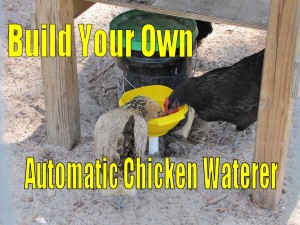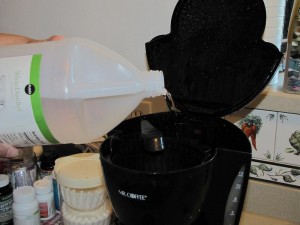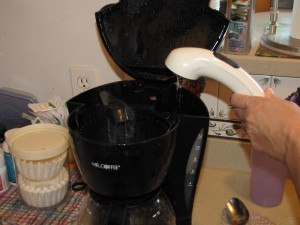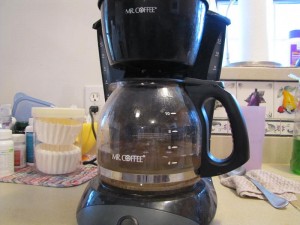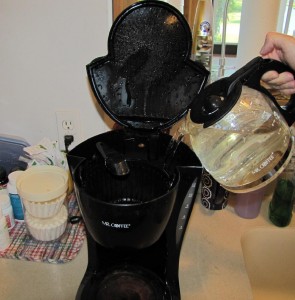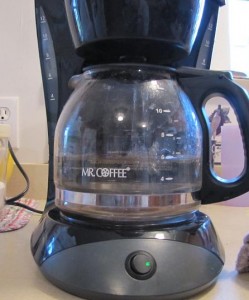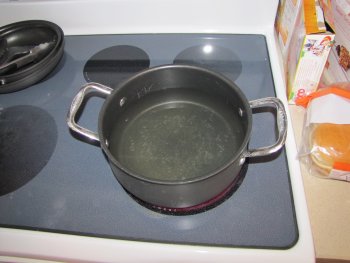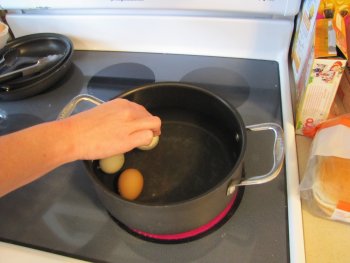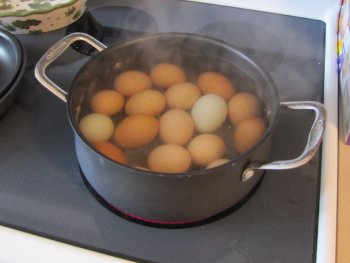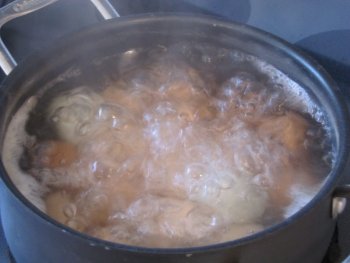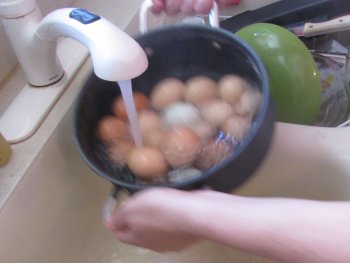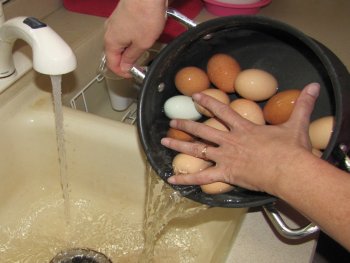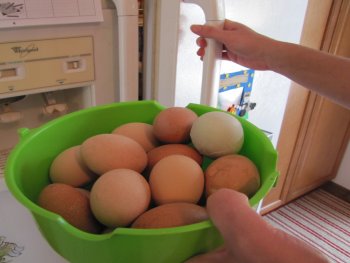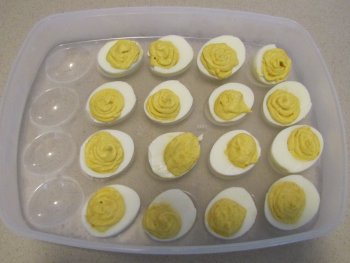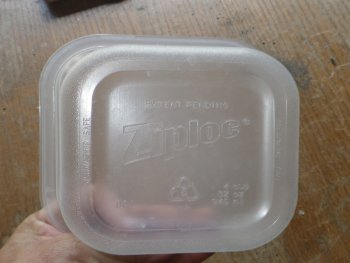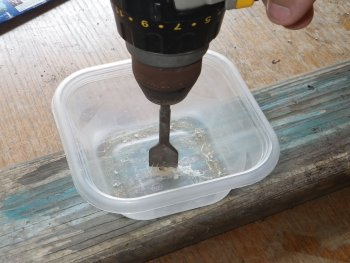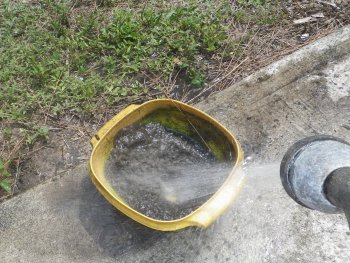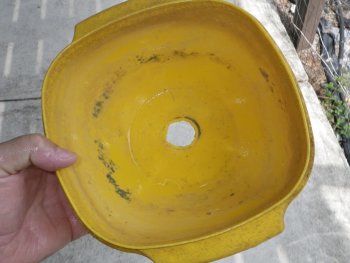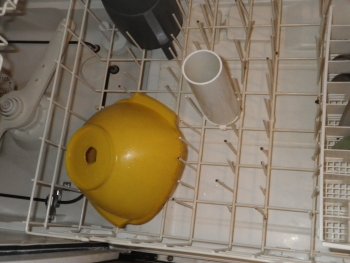The Automatic Chicken Waterer has been doing well for me and I know that many are viewing my site for the design. Hopefully it inspires ideas into creating a similar or expanded version. The Automatic Chicken Waterer concept can be customized many different ways so there is not one right way, but the right way for YOUR situation. My design uses a 5-gallon bucket as the frame and reservoir.
Below is a parts list for the Automatic Chicken Waterer with the 5-gallon bucket for the frame and reservoir. I tried to put together a few of the options, but make sure and identify what will work for you and your specific situation. I am in South Florida and we deal with heat and sand. The winters are not cold enough to freeze the water, but the summers are hot enough to worry about water that is hot. I keep my automatic chicken waterer shaded for this purpose and the sand has to get washed out periodically by cleaning out or changing the cup.
The Automatic Chicken Waterer is made up of 3 parts. The reservoir, supply, and the cup or bowl. I will identify each of the parts within these labels. I have included links to Amazon.com via affiliate links so just hover over the link to get an idea of what they look like. Also some parts may not be priced efficiently and may be better to get at your local hardware store.
Automatic Chicken Waterer Reservoir
The reservoir in my design is a 5 gallon bucket. Any “tank-like” item that is big enough, will hold water, keep light out, and be able to be covered will do. You also need to be able to drill through it. I would use a black bucket for the purpose of not letting any light in. A lighter colored bucket would be good if you are able to put the reservoir in a hidden location that doesn’t get any direct sunlight. Again, you would customize it to your situation.
5 Gallon White Bucket & Lid – Durable 90 Mil All Purpose Pail – Food Grade – BPA Free Plastic –
Black bucket only – Hydrofarm HG5G 5-Gallon Black Bucket
Black bucket only – Encore Plastics 250003 Bucket Space Black 5 Gallon
Black bucket with lid – Dynamic Enviro Paintware KK053000 5-Gallon Enviro Recycled Plastic Pail Lid
Blue bucket with lid – Petco Bucket, 5 gallons, Color: Blue
Black bucket with screw on lid – Bucket Kit, One Black 5 Gallon Bucket with Black Gamma Seal Lid
Screw on lid to retrofit 5-gallon bucket – The Gamma Seal Lid, Black
Here is a heater for a 2-10 gallon aquarium in case you are in snow country – Tetra 26447 Submersible Aquarium Heater, 50-Watt
Automatic Chicken Waterer Supply
REMEMBER THIS PORTION MAY BE UNDER PRESSURE!
The supply consists of either a water hose or hard line water supply, or even a combination of both. You could run pvc from the automatic chicken waterer to a select location and then a water hose from there (so you could remove it when you want to and not worry that it is running water all the time). Then either a toilet fill valve, which is in my design, or just a way to fill it with water periodically. There are other types of float valves out there, but the toilet fill valves are straight up and down, and already have a way to hook up to a water supply line. This section will take us from hooking up to a water source (or not) to filling the reservoir.
Toilet Fill Valve – Float valve
Standard toilet fill valve – Fluidmaster 400A Anti-Siphon Toilet Tank Fill Valve
Drill Hole for Toilet Fill Valve
1″ paddle bit to drill the hole for the toilet supply valve and also for drilling the thru-wall for the cup – DEWALT DW1582 1-Inch by 6-Inch Spade Drill Bit
Water Supply Line
The following three items are the same, but each is a little different type. 7/8″ to connect to the toilet supply valve, then a 3/8″ compression (which typically hooks up to the supply valve on the wall behind the toilet). This is strictly to get from the toilet fill valve to regular pvc (the 7/8″ thread does not exist in pvc that I know of, there may be a brass fitting somewhere, but I have not been able to find one) then everything is pretty standard from there.
Fluidmaster PRO1T12CS Click-Seal Stainless Steel 12-Inch Toilet Supply Line
This one appears to have metal connections on both ends – Aviditi 30462AVI Stainless Steel Braided Supply Line for Toilet with Brass Steel Nuts, 3/8-Inch Compression by 12-Inch
Fluidmaster B1T12 Toilet Connector, Braided Stainless Steel – 3/8″ Female Compression Thread x 7/8″ Female Ballcock Thread, 12″ Length
Water Supply Line to PVC thread
So now we are past the toilet fill valve and getting to regular pvc – the first thing we have to do is go from compression to pipe thread. The following 3 items will get from the 3/8″ compression at the end of the toilet supply hose to 1/2″ Female pipe thread, which can then be taken 100 different directions. PVC parts are better chosen at your local hardware store where you can put the parts together and make sure you have the right sizes and parts to build what you want.
Watts LFA124 Compression Male Adapter, 3/8-Inch OD x 1/2-Inch MIP
Brasscraft 66-6-8X 3/8 OD by 1/2-Inch Female Reducing Adapter Lead-Free, Rough Brass
This achieves the same thing, but is a valve (just like the one probably in your house) – LDR 537 6101 Low Lead Shut Off Street Valve 3/8-Inch Compression x 1/2-Inch FIP, Chrome
Standard PVC Fittings to Water Supply Source
I am going to go 1/2″ pvc to the ball valve (which will give me control out at the waterer or near it) then 3/4″ from there. You can move into 3/4″ anytime by finding the right parts.
To go directly to a water hose
1/2″ male to male nipple – Banjo NIP150-SH Polypropylene Pipe Fitting, Short Nipple, Schedule 80, 1-1/2″ NPT Male, 2-1/2″ Length
1/2″ female to 3/4″ female water hose (the female end of the water hose usually comes out of the water hose valve so you would have the male end to connect to) – Anderson Metals Brass Garden Hose Fitting, Swivel, 3/4″ Female Hose ID x 1/2″ Female Pipe
To go directly to pvc piping
1/2″ male to slip pvc – LDR FP4 MA-112 PVC Male Adapter, 1-1/2-Inch Slip x Slip x MIP
2 feet of 1/2″ pvc – Charlotte Pipe Pvc Sch 40 Solid Pipe 1/2 ” X 2 ‘
1/2″ threaded ball valve – Homewerks VBV-P40-B3B Ball Valve, PVC Schedule 40, Female Thread x Female Thread, 1/2-Inch
1/2″ slip ball valve – PVC Schedule 40 Slip Ball Valve. Size: 1/2 inch
Now go from 1/2″ slip to female water hose thread – LASCO 15-1621 PVC Hose Adapter with 3/4-Inch Female Hose and 1/2-Inch PVC Pipe Glue Connection
Automatic Chicken Waterer Cup
This portion is not under pressure. For this section I am using 3/4″ pvc because the fitting is bigger and seals better on the bucket or reservoir. The 1/2″ fitting is too small, though it may work in your application. PVC parts are better chosen at your local hardware store where you can put the parts together and make sure you have the right sizes and parts to build what you want.
The cup or bowl is where the chickens or other pets would actually drink out of. The automatic chicken waterer needs to be situated so the chickens do not use it as a roost, or roost above it. I was able to salvage an old wooden table to put my automatic chicken waterer under, so this provided shade and the chickens cannot get on top of it, but can easily get in to drink as much as they want.
Thru-wall fittings
The way I have done it.
3/4″ male threads to put into the reservoir – 3/4″ slip to build cup (this same fitting will be used to fill the actual bowl) – LDR FP4 MA-34 PVC Male Adapter, 3/4-Inch Slip x Slip x MIP I believe I put the slip side in the bucket with the threads out.
Rubber gasket material – You will also use this to seal to the bowl or cup LASCO 02-1048E Rubber Sheet, 6X6-Inch and 1/16-Inch Thick I put the gasket inside the bucket so the fitting would press against it and never let the water out.
3/4″ female thread to tighten and seal to bucket – The most important thing with this is the female threads to lock and seal the pvc fitting into the reservoir so several different fittings can be used (except a cap) – LDR FP4 FA-34 Female Adapter, 3/4-Inch PVC Slip x FIP So at this point you could be slip or threads.
A way you may want to try – seems to be a little more sleek and may also work with the bowl or cup as well.
3/4″ thru-wall assembly – This should have 3/4″ female thread inside- Lifegard Aquatics 3/4-Inch Double Threaded Bulkhead
Misc. 3/4″ PVC Fittings
3/4″ pipe – Charlotte Pipe Pvc Sch 40 Solid Pipe 3/4 ” X 2 ‘
3/4″ Tee slip – LDR FP4 T-34 PVC Slip Tee, 3/4-Inch
3/4″ Tee threaded – Lasco 405-007 0.75 in. PVC Threaded Tee
3/4″ cap slip – LDR FP4 CA-34 PVC Slip Cap, 3/4-Inch
3/4″ cap threaded – Can’t find one on Amazon
3/4″ nipple 2″ – GF Piping Systems PVC Pipe Fitting, Nipple, Schedule 80, Gray, 2″ Length, 3/4″ MPT
3/4″ nipple 3″ – GF Piping Systems PVC Pipe Fitting, Nipple, Schedule 80, Gray, 3″ Length, 3/4″ MPT
3/4″ nipple 4″ – GF Piping Systems PVC Pipe Fitting, Nipple, Schedule 80, Gray, 4″ Length, 3/4″ MPT
3/4″ nipple 5″ – GF Piping Systems PVC Pipe Fitting, Nipple, Schedule 80, Gray, 5″ Length, 3/4″ MPT
3/4″ nipple 6″ – GF Piping Systems PVC Pipe Fitting, Nipple, Schedule 80, Gray, 6″ Length, 3/4″ MPT
Automatic Chicken Waterer Cup
The cup can be any stronger plastic recycled item. I like to find things that will be thrown away and drill a 1″ hole through it. The cup has to be tall enough for the high water not to overflow and the low water not to run completely out. The fill valve can be adjusted so it does not have so much of a spread between the time it turns on(low water in the bowl) and the time it shuts off(full)
These should work good – Glad Food Storage Containers, Tall Entree, 3 Count
You can also use this with the watering nipples already in place – BriteTap Chicken Waterer The description says to just drill a 5/8″ hole – here is a 5/8″ bit – Bosch Daredevil DSBS1007 5/8-Inch by 4-Inch Stubby Spade Bit
Automatic Chicken Waterer Parts List Short Version
Reservoir – I used a black 5-gallon bucket with a drywall bucket lid (it just snaps on)
Water supply – Toilet fill valve, 1-inch paddle or spade bit to drill hole, toilet supply line 7/8″ x 3/8″ compression, 3/8″ male compression x 1/2″ female pipe thread fitting, 1/2″ pvc piping to 1/2″ ball valve, to my water supply or you can fit it to the hose.
Cup or Bowl – 3/4″ male thread x 3/4″ slip + custom rubber gasket + 3/4″ female x 3/4″ slip (to go through bucket), 3/4″ piping to 3/4″ tee slip, down to cap to stabilize bowl, up to 3/4″ slip x 3/4″ male threads through bowl + custom rubber gasket + 3/4″ female x 3/4″ slip + 3/4″ pipe up to a Tee to easier remove bowl or cup for cleaning or replacement (See T-handle Post), The cup or bowl is tall enough so the spread in the fill valve can fill and empty, and big enough around so the chickens can get in and drink around the T-handle. I have used Tupperware, Gladware, and recycled drink containers that I cut the bottom off of.

